Characteristics of a gregorian chant – The characteristics of Gregorian chant, an ancient and captivating form of monophonic liturgical music, offer a unique lens into the history, culture, and spirituality of Western civilization. This comprehensive exploration delves into the musical, textual, and performance practices that define Gregorian chant, uncovering its enduring significance and timeless appeal.
Gregorian chant, with its origins in the early Middle Ages, has played a pivotal role in the development of Western music and continues to captivate audiences worldwide.
Definition of Gregorian Chant
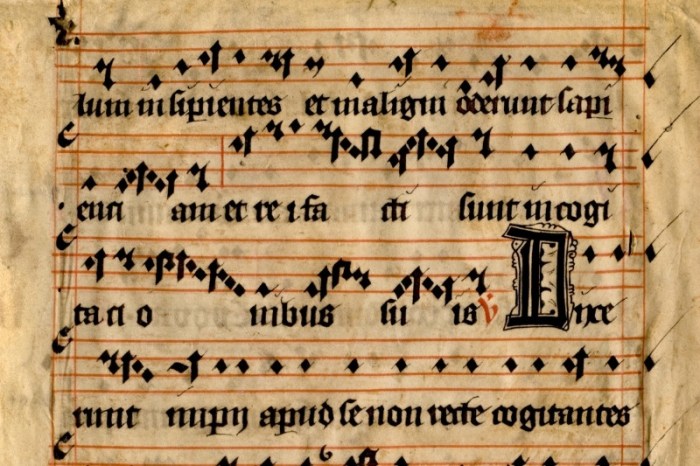
Gregorian chant is a monophonic, unaccompanied liturgical music of the Roman Catholic Church. It is characterized by its modal melodies, free rhythm, and Latin texts. Gregorian chant originated in the 6th century and is named after Pope Gregory I, who is credited with codifying and standardizing the chant.The
Catholic Church played a central role in the development and preservation of Gregorian chant. The chant was used in liturgical services, and the Church established schools to train singers in the proper performance of the chant. Gregorian chant became an important part of the Catholic Church’s musical tradition and is still used in many Catholic churches today.
Origins
Gregorian chant has its roots in the early Christian Church. The earliest forms of Christian chant were simple melodies that were used to accompany the singing of psalms and hymns. Over time, these melodies became more elaborate, and by the 6th century, they had developed into the form that we know today as Gregorian chant.
Historical Significance
Gregorian chant is one of the most important and influential forms of music in Western history. It has been used in Catholic churches for over 1,500 years and has had a profound impact on the development of Western music. Gregorian chant is a valuable source of information about the history of the Catholic Church and the development of Western music.
Musical Characteristics
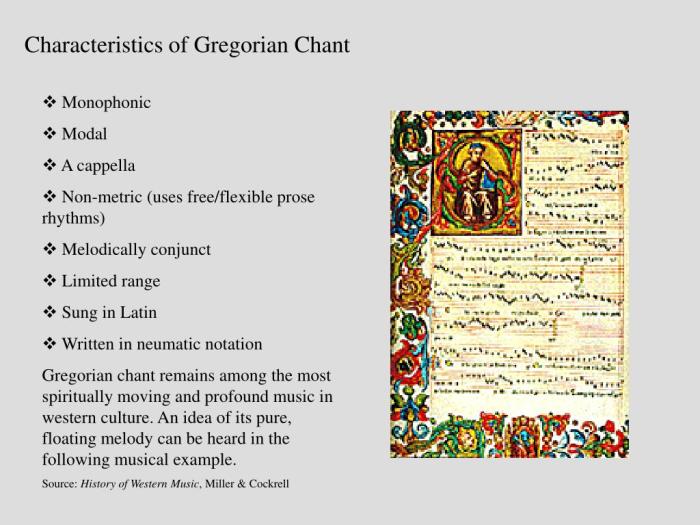
Gregorian chant exhibits a distinct set of musical characteristics that set it apart from other forms of music.
The most notable feature of Gregorian chant is its monophonic nature, meaning it is sung in a single line without any instrumental accompaniment. This allows the melody to stand out and create a sense of purity and simplicity.
Modal Scales
Gregorian chant employs a system of modal scales, which are different from the major and minor scales commonly used in Western music. These scales consist of a specific pattern of whole and half steps, resulting in a unique and distinctive sound.
Limited Melodic Range
The melodic range of Gregorian chant is generally limited, typically spanning only a few notes. This limited range contributes to the chant’s simplicity and allows for a clear and focused melody.
Rhythmic Patterns, Characteristics of a gregorian chant
The rhythmic patterns in Gregorian chant are free and fluid, not conforming to a strict beat or tempo. The notes are sung in a flowing and natural manner, with varying durations and accents.
Melismas and Neumes
Melismas are extended passages where a single syllable is sung over several notes. Neumes are groups of notes that are sung together as a single unit. These techniques add ornamentation and variety to the chant’s melody.
Textual Content
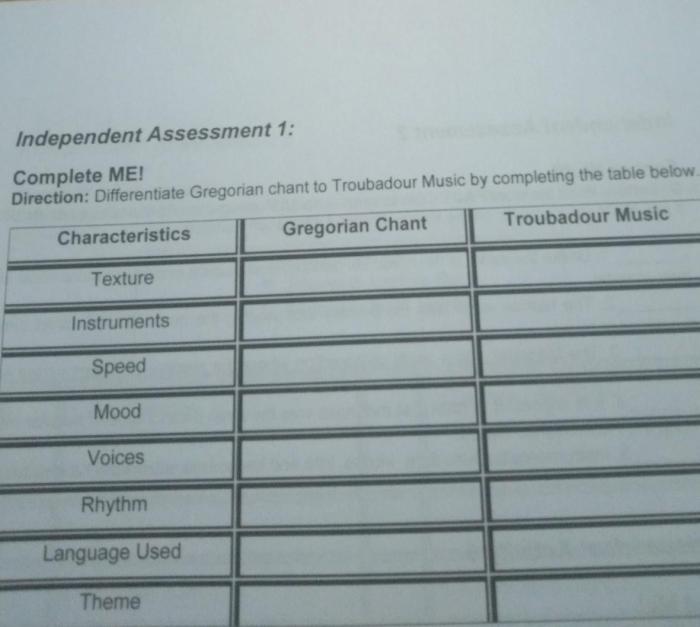
Gregorian chant primarily uses liturgical texts from the Bible and Psalms, which are the core of the Roman Catholic liturgy. These texts, written in Latin, hold significant religious and historical importance.
The relationship between the text and the music in Gregorian chant is symbiotic. The music enhances the meaning and emotional impact of the words, while the text provides the framework for the musical structure. The chant’s melodies often follow the natural rhythm and intonation of the Latin language, allowing the words to be clearly understood and emphasized.
Latin and its Impact
The use of Latin in Gregorian chant has a profound impact on its sound and expressiveness. Latin’s rich vowel sounds and distinct pronunciation contribute to the chant’s resonant and solemn character. The language’s inherent formality and sacredness also enhance the chant’s devotional and liturgical significance.
Performance Practices
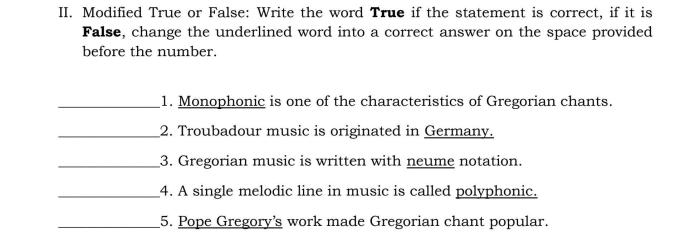
Gregorian chant is typically performed by a choir, with each voice singing a single line of melody. The chant is sung in unison, without any harmony or accompaniment. The traditional notation for Gregorian chant is plainchant notation, which uses a system of square notes and lines to indicate the pitch and rhythm of the chant.
The choir typically sings from a choir book, which contains the chant notation and the text of the chant.
The vocal technique used in Gregorian chant is very important. Singers must have proper breathing, diction, and phrasing in order to sing the chant correctly. The chant should be sung with a clear, resonant tone, and the words should be pronounced clearly and distinctly.
The phrasing of the chant is also important, as it can affect the meaning of the text.
Ornamentation and Improvisation
Ornamentation and improvisation are two common features of Gregorian chant performances. Ornamentation is the addition of embellishments to the melody of the chant, such as trills, turns, and mordents. Improvisation is the creation of new melodies or variations on existing melodies.
Both ornamentation and improvisation can be used to add variety and interest to a Gregorian chant performance.
Cultural and Social Impact: Characteristics Of A Gregorian Chant
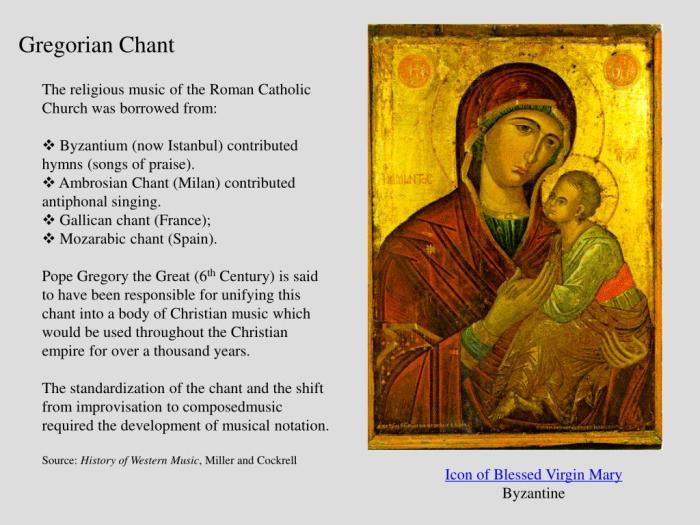
Gregorian chant holds immense cultural and social significance, transcending its liturgical roots to influence Western music and culture.Within the Catholic Church, Gregorian chant remains a central element of religious ceremonies, particularly during the Mass and other liturgical events. Its sacred melodies evoke a sense of awe and reverence, enhancing the spiritual experience of worshippers.
The chant’s melodic simplicity and otherworldly quality have also made it a popular choice for use in film, television, and other media.In the 20th and 21st centuries, there has been a notable revival of interest in Gregorian chant. This resurgence can be attributed to the efforts of musicologists, choirs, and recording artists who have sought to preserve and promote this ancient musical tradition.
The chant’s timeless melodies and spiritual depth continue to resonate with audiences, offering a glimpse into the rich musical heritage of the Middle Ages.
Key Questions Answered
What is the primary function of Gregorian chant?
Gregorian chant serves as the primary liturgical music of the Roman Catholic Church, accompanying religious ceremonies and enhancing the spiritual experience.
How does Gregorian chant differ from other forms of music?
Gregorian chant is unique in its monophonic nature, featuring a single melodic line without instrumental accompaniment. It employs modal scales and a limited melodic range, creating a distinct and ethereal soundscape.
What are the typical texts used in Gregorian chant?
Gregorian chant typically draws its texts from liturgical sources, including the Bible, Psalms, and other sacred texts. The chant’s melodies enhance the meaning and emotional impact of these words, fostering a deeper connection with the divine.
How is Gregorian chant typically performed?
Gregorian chant is traditionally performed by choirs, with each singer adhering to strict vocal techniques and proper breathing. Plainchant notation guides the performance, and ornamentation and improvisation may be incorporated to add expressive depth.